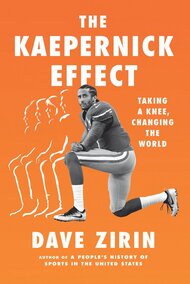Why Serena Williams Has the Greatest Career in Sports History

The 37-time Grand Slam champion’s accomplishments dwarf those of Tom Brady and LeBron James because of what she had to overcome.
As the clock turned to the year 2000, ESPN put out its rankings of the greatest athletes of the 20th century. The list was objectionable on several fronts: Babe Ruth ahead of Muhammad Ali? Secretariat—yes, the horse—ahead of Oscar Robertson? Ahead of Lawrence Taylor?) But the worst part about the list was that it was a sausage fest. There were five women in the top 50, with Chris Evert squeaking in at number 50. Of the five, only two were Black women, the highest ranked being track-and-field legend Jackie Joyner-Kersee at 23. This arid landscape was the sports world that Serena Williams audaciously set out to rule. In the year 2000, Serena Williams was a 19-year-old tennis prodigy still playing in the shadow of big sister Venus. The standard belief of almost everyone—save her father Richard Williams—was that Serena would be Dom DiMaggio to Venus’s Joltin’ Joe: a quality career but always the familial afterthought.
But Serena had already won the US Open at 17, and her confidence was running high. That momentum would last another 22 years. She now has the greatest career in the history of professional sports. With Serena Williams set to retire after the forthcoming US Open, it is worth taking stock in the enormity and breadth of what she has accomplished. When Serena Williams turned pro, Bill Clinton was in his first presidential term; the movie Toy Story was the number one box office hit of the year—and Serena was not much older than Toy Story’s target audience. It was 1995, and she was 14 years old. She made a whopping $250 in her first pro match against a terrific trivia answer by the name of Annie Miller. Now Serena’s career ends 27 years later with 23 Grand Slam singles titles and 14 doubles titles to her name. Her career is older than five-time Wimbledon champion Bjorn Borg was when he retired.
The length of Serena’s dominance is rivaled historically only by people like geriatric quarterback Tom Brady or basketball king LeBron James. But her career accomplishments also dwarf those of Brady and James precisely because of what Serena had to overcome while also being unquestionably and undeniably herself. She showed the world you don’t have to “get in where you fit in.” You can fight to carve your own space, and even when you lose—Serena’s career was not a string of uninterrupted success—better to go down as yourself than as someone trying to be somebody else. She persevered in situations that neither Brady nor James could understand: winning the 2017 Australian Open while eight weeks pregnant? Coming back to her sport after almost dying during childbirth due to blood clots? That’s Serena. And of course, Serena Williams did not only survive the very white, often hostile world of tennis. She thrived. The amount of toxic distraction she had to confront on the road to greatness is probably exceeded only by names like Muhammad Ali, Jackie Robinson, and Jack Johnson. Her hard-fought success blasted caverns in the country club and inspired a new generation of young Black girls to reach for a racket, believing that this sport is now for them too. The public courts near my house are very much a beautiful testament to this.
She also inspired the pen of the luminous author and poet Claudia Rankine, who wrote of the two siblings, “Serena and her big sister Venus brought to mind Zora Neale Hurston’s ‘I feel most colored when I am thrown against a white background.’… Serena and Venus win sometimes, they lose sometimes, they’ve been booed and cheered, and through it all and evident to all were those people who are enraged they are there at all—graphite against a sharp white background.”
The unimpeachable success against this “all-white background”—in the tradition of Althea Gibson, Arthur Ashe, Yannick Noah, and Zina Garrison but on a far grander scale—is precisely why Serena Williams and her body of work stands alone. That rather silly, staid list of the 20th century’s greatest athletes contained not a hint of who was coming in like a whirlwind. Now Serena is the standard, and everyone else is looking up.
More columns ⇒
Support the Work
Please consider making a donation to keep this site going.
Featured Videos
Dave on Democracy Now!

